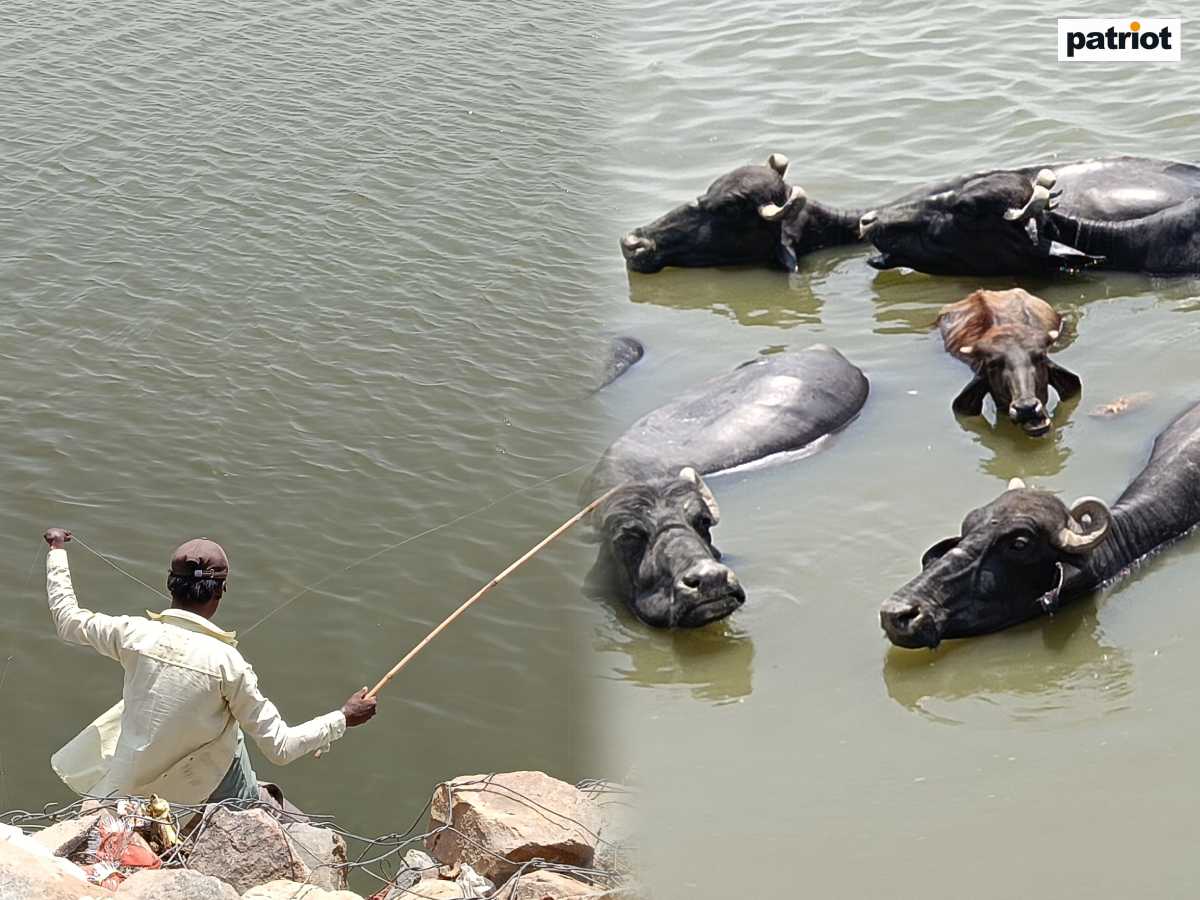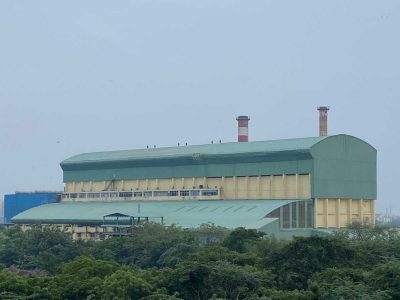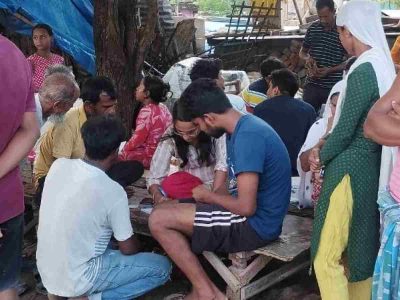Delhi: With heatwave conditions prevailing in the Capital, the lives of residents remain in a constant state of turmoil as the maximum temperature touches 45 degrees Celsius regularly.
Life has been equally harsh for many villagers who live along the Yamuna river bank. The residents comprise fishermen, cattle herders and farmers.
However, with the ever-rising temperatures, their primary concern is the decline in commercial trade. Their financial well-being apes the state of the once magnificent river, as their streams of livelihood have started to dry up.
The river which once housed an array of fish, has now become a source of constant delirium for the fishing community living along it.
Also read: Delhi woman arrested for hiring goons to attack, disfigure ex-boyfriend
Reports state that the fishing community earlier used to acquire fish like puthi, malli, chilwa, bachua, baam and catfish. However, these have become hard to come by, owing to the deadly combination of increasing temperatures and pollution.
Rajesh Kumar, 42, has spent the last 10 years of his life fishing along the banks of the river. The reality of the water body, however, has now become frighteningly stark.
“There are not many fish in the river anymore to help us keep up with our livelihood. Whatever amount of yield we get for a day is not enough to sustain the family,” he said.
Kumar, who used to fish out at least 40 kg of a variety of fish a decade ago, is now struggling to capture even 10 kg on a good day now.
When Patriot reached out to him, he had already been sitting at the river’s edge for the past four hours without a single bite on his carefully crafted wheat bait.
Each attempt to drop the fishing line was followed by a jittered sigh and another attempt to repurpose the bait to capture at least one fish. The bigger fish are nowhere to be seen while the fisherman waits for a school of smaller fish including the puthi.
“The other fish have all but turned extinct in recent times,” said Kumar.
Fishing nearby on the same bank, Rajneesh Mondal, 32, elaborated upon similar issues that have plagued the community for the past decade.
However, this year’s heat has turned the fishing industry on its head. With sweat dripping from his forehead, and covering his entire face, Mondal remains distracted swiping through one Instagram reel after other, with little hope of catching any fish.
“All of the fish have located themselves near the river bed, much below the surface, which makes it difficult for us to land any of them. They do not come towards the surface which also makes it difficult for them to see our bait,” he said.
Owing to the gradually rising temperature, the fisherman has had to take up additional odd jobs to sustain himself.
“From working as a daily wage labourer to a coolie at the Sonia Vihar market, I have done it all. I never had to go for other jobs while being a fisherman in the past 15 years but now, with this low yield, I do not have any other option,” said Kumar, who has been to the market to sell his fish only once in the past three weeks.
Now the river is optimal only for the buffaloes of cattle-rearers to cool themselves off. The river remains bereft of fish, without any respite for the fishermen’s livelihood.
Sometimes an odd catfish shows up in the fishermen’s net, which makes livelihood through selling fish seem possible. But the sight of catfish also heralds doom.
“Catfish are only seen in pockets where the water is polluted. This makes it difficult for other fish to survive, otherwise they also contract some disease and are inevitably eaten by the catfish. This makes the catfish hazardous to eat too. We have heard multiple complaints regarding them causing stomach aches and diarrhea in customers. This has also led to a lesser number of customers coming to our market,” said Mandal, who hails from Bengal’s Burdwan.
Also read: Water crisis: Delhi minister Atishi’s blood sugar, pressure levels dip on 2nd day of hunger strike
On the other hand, the increasing temperatures and rampant exploitation of Delhi’s resources for urbanisation has also led to many of these wetlands and water bodies getting dried up.
According to a report by think-tank Centre for Science and Environment, 63% of the water bodies and wetlands in the floodplains have dried up.
This has also led to the deterioration of farmlands in the national capital. Areas which used to serve as farming zones have now turned into dry patches while areas which used to get their water supply from Yamuna, are now dependent on water tankers.
“We use the Yamuna water sparingly since it is mostly polluted and the temperature is also much more than what should be supplied to the plants. We have started calling private tankers to supply our crops with water, but it is a good thing that June is not a cultivating season for us,” said Pawan, 28, a farmer along the floodplains near Signature Bridge.





